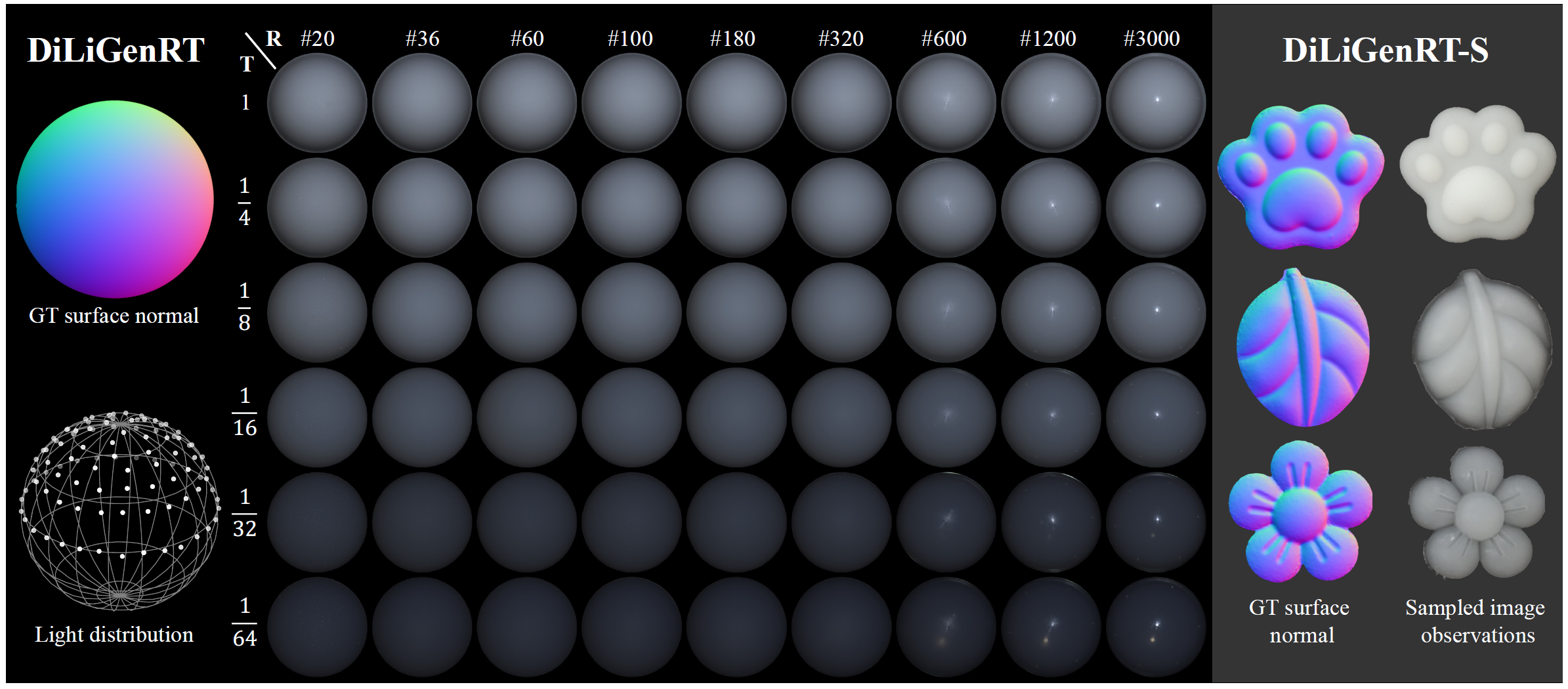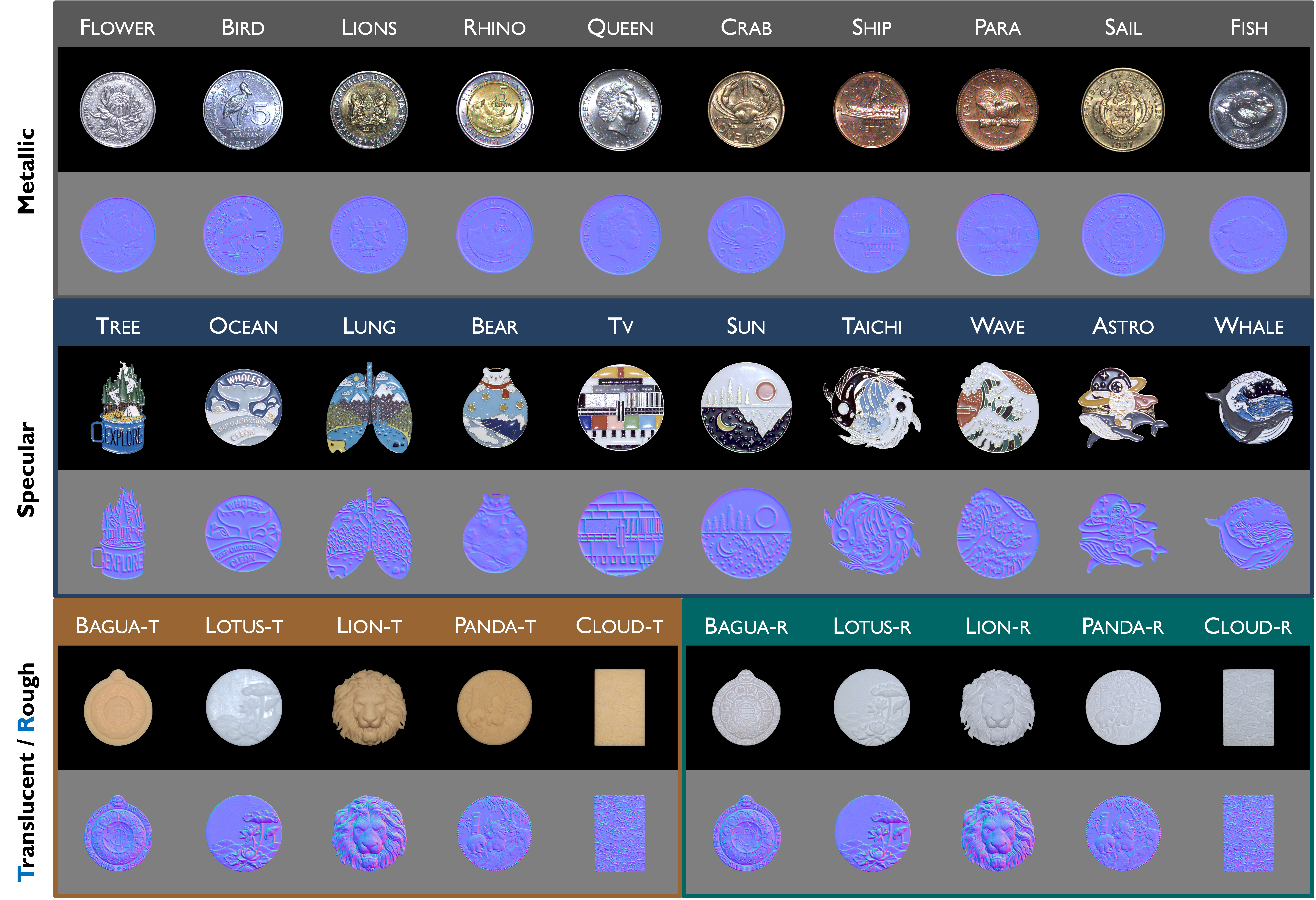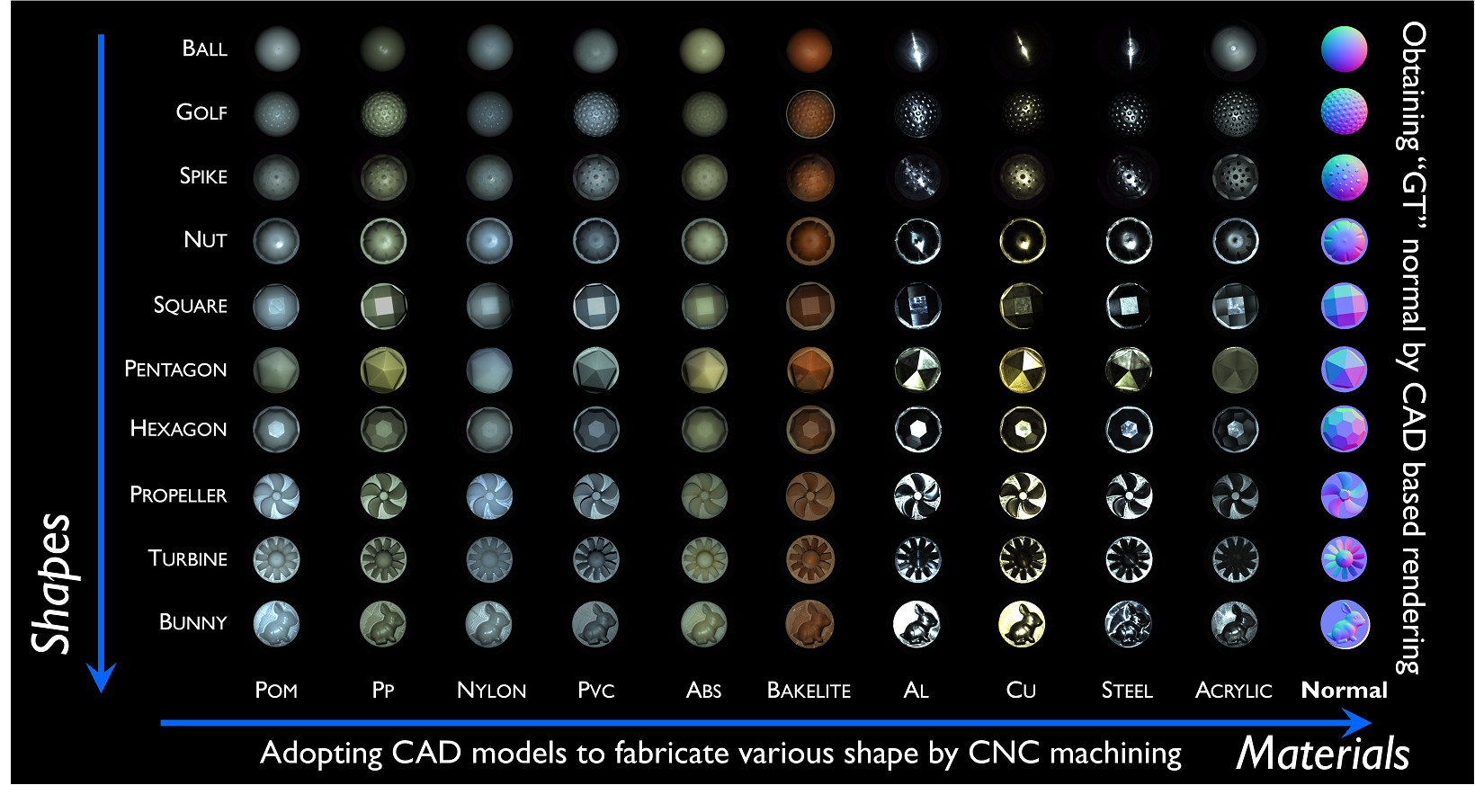PhotometricStereo is compuational imaging method, which can recover surface normal map and reflection characteristics from various directionl illumination encoding observe images.
Datasets
We proposed datasets to benchmark photometric stereos (PS) methods.
DiLiGenRT
DiLiGenRT Dataset contains 54 objects with controlled surface roughness and structure translucency. Precise roughness and translucency are measured, fabrication process is designed and the recover performance variation of PS methods are benchmarked.

DiLiGenT-Pi
DiLiGenT-Pi Dataset contains 30 near-planar and rich-detail objects with 4 group materials combinations. Precise details are measured and diverse materials are designed to evaluate the shape details recover performance of PS methods.

DiLiGenT102
DiLiGenT102 Dataset contains 100 objects with 10 shapes and 10 materials combinations. With controlled shapes and materials, one can evaluate the performance of each PS method on each dimension independently.

DiLiGenT
We build the ‘DiLiGenT’ photometric stereo image dataset with calibrated Directional Lightings, objects of General reflectance, and ‘ground Truth’ shapes (normals) for orthographic projection and single-view setup. Based on our dataset, we quantitatively evaluate state-of-the-art photometric stereo methods for general non-Lambertian materials and unknown lightings to analyze their strengths and limitations.

DiLiGenTMV
We extend single-view dataset to the multi-view edition as ‘DiLiGenT-MV’. This new dataset contains images of 5 objects of complex BRDFs taken from 20 views. and in each view, 96 calibrated point light sources are used. The ‘ground truth’ shape is available for quantitative evaluation. This ‘DiLiGenT-MV’ can be used to evaluate multi-view stereo methods under complex materials for lighting, be used to evaluate conventional single-view photometric stereo algorithms by treating each view independently.
